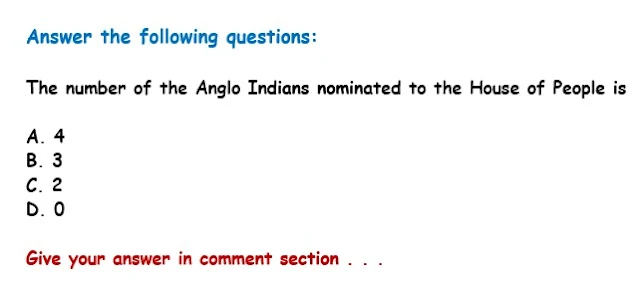The Parliament of India is composed with the President, Lok Sabha and Rajya Sabha so President of India is an inseparable part of Indian Parliament.
He is the Constitutional Head of Indian Republic. He plays very important role in law making process. Without his signature, a Bill passed by both the Houses cannot take the form of law.
Some of his legislative powers are as under:
i. He addresses the Parliament at the beginning of the budget session every year and also at the beginning of the first session after the Lok Sabha elections.
ii. He nominates 12 members from the fields of science, arts, social services and literature to the upper house and nominates 2 members from the Anglo – Indian community to the lower house.
iii. He has veto powers under Article 111 of the Constitution. Under this power, he may give his assent to Bill, may withhold his assent to the Bill or may return the Bill.
iv. He can summon the joint sitting of both the houses of Parliament which is presided by the speaker of the Lok Sabha.
v. He has the power of to summon and prorogue both the House of Parliament. He can also dissolve the House of the People before the expiry of its term.
vi. He lays reports of CAG, UPSC, finance commission and others before the parliament.
Additionally, the President of India has ordinance making power under Article 123 of the Constitution. When the Parliament is not in session, the President may issue an ordinance. It has the same force as the law or Parliament. But it must be placed before the Parliament when it again assembles.
If it is then approved by both the Houses of Parliament, it will cease to operate after six weeks of the date of meeting of Parliament. And the President can call a joint session of both Houses of Parliament to resolve a constitutional deadlock over a public Bill.
Supreme Court of India in A. K. Roy v. Union of India, 1982 SCR (2) 272 observed that the power of the President to issue an ordinance under Article 123 of the Constitution is a legislative and not an executive power.
From a conspectus of the provisions of the Constitution it is clear that the Constituent Assembly was of the view that the President’s power to legislate by issuing an ordinance is as necessary for the peace and good government of the country as the Parliament’s power to legislate by passing laws.
The mechanics of the Presidents legislative power was devised evidently in order to take care of urgent situations which cannot brook delay. The Parliamentary process of legislation is comparatively tardy and can conceivably be time consuming.
It is true that it is not easy to accept with equanimity the proposition that the executive can indulge in legislative activity but the Constitution is what it says and not what one would like it to be.
The Constituent Assembly indubitably thought, despite the strong and adverse impact which the Governor-General’s ordinance making power had produced on the Indian community in the pre-independence era, that it was necessary to equip the President with legislative powers in urgent situations.



